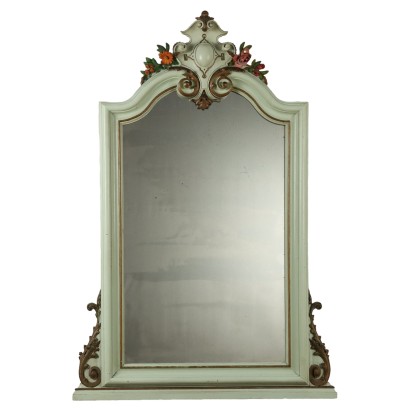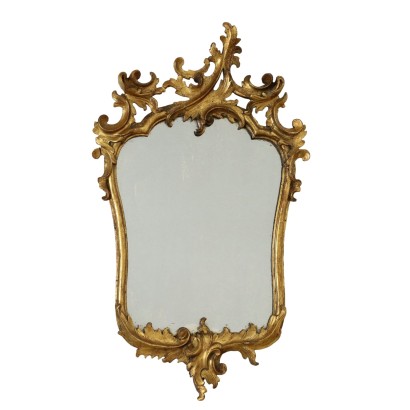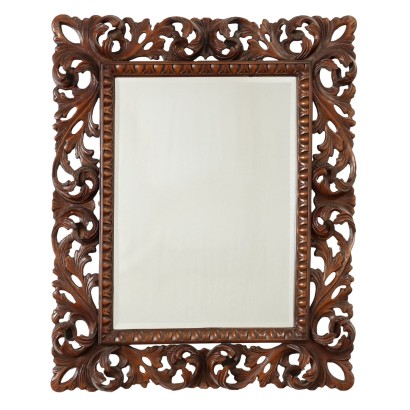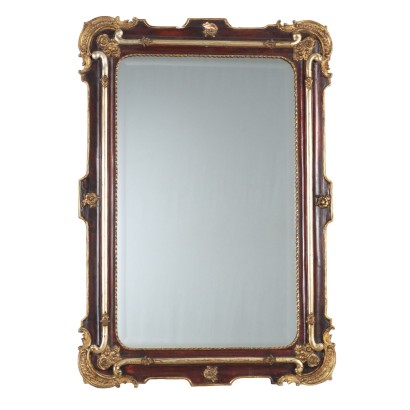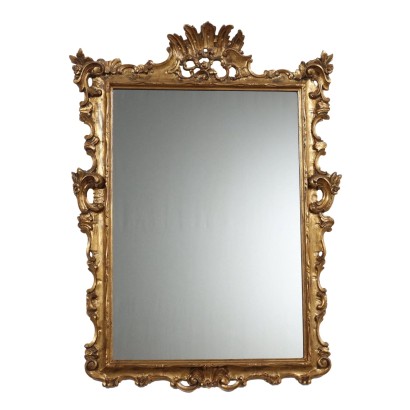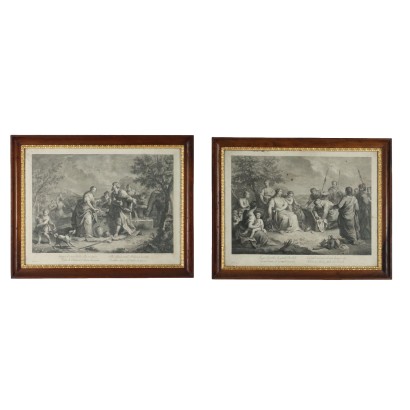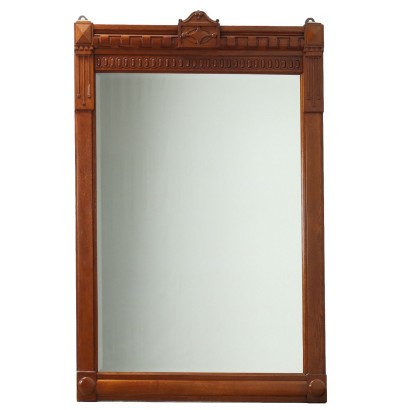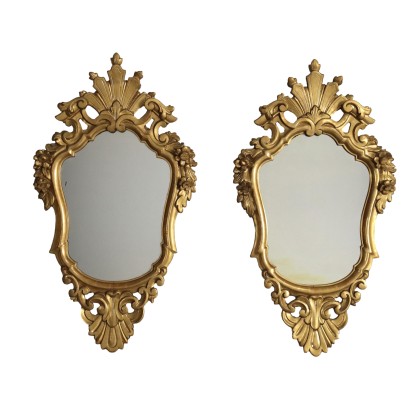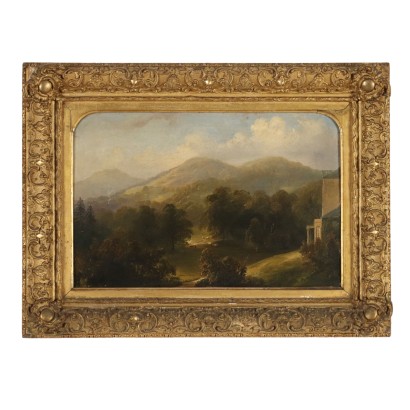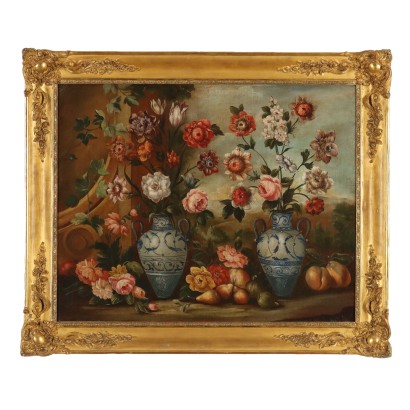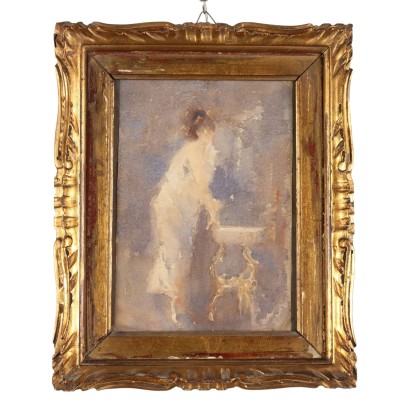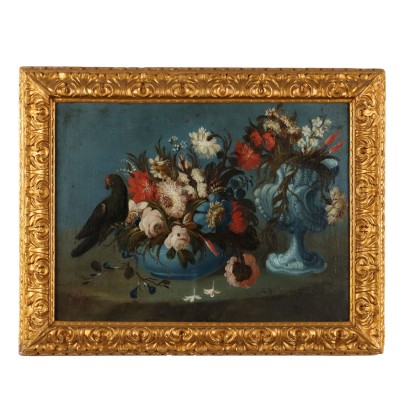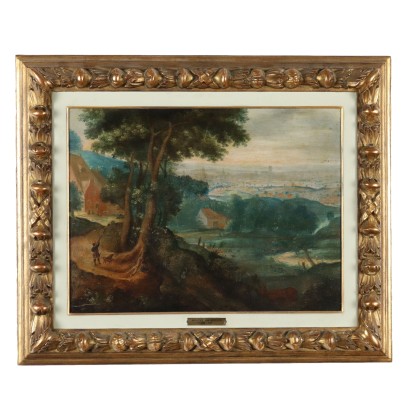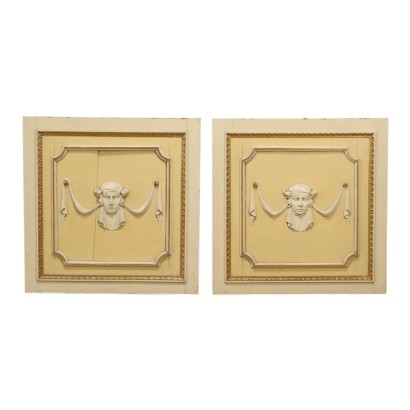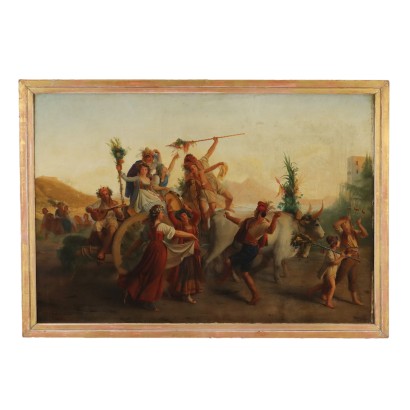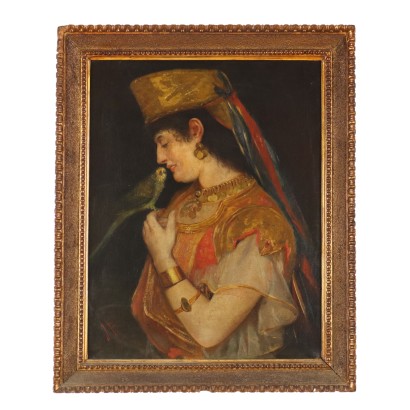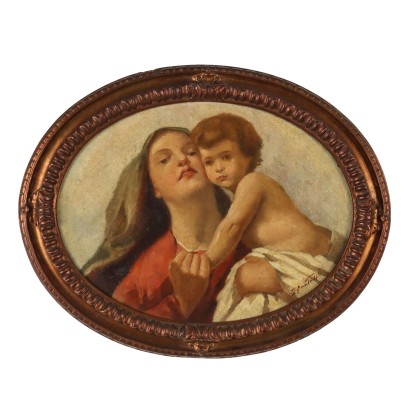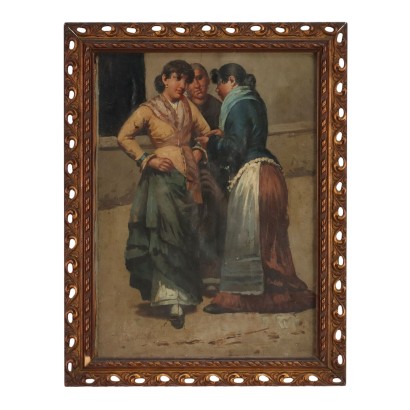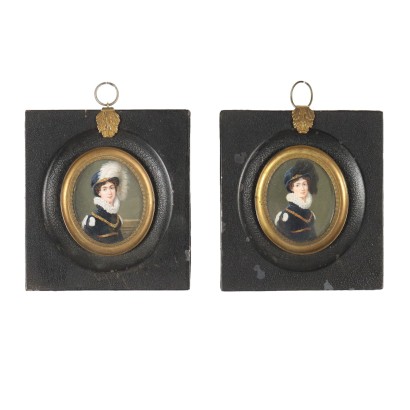Umbertina Mirror - Italy Late 19th Century
Features
Italy Late 19th Century
Style: Umbertino (1870-1900)
Age: 19th Century / 1801 - 1900
Origin: Italy
Main essence: Walnut
Description
Umbertina free-standing mirror in lacquered and painted walnut with gilded details. Cyma composed of a central coat of arms supported by curls and leaf carvings, adorned with rose branches. Base with leaf carvings and curl as lateral support. Italy, late 19th century.
Product Condition:
Product that due to age and wear requires restoration and polishing. We try to present the real condition of the furniture as completely as possible with the photos. If some details are not clear from the photos, what is reported in the description is valid.
Dimensions (cm):
Height: 180
Width: 124
Depth: 12
Additional Information
Style: Umbertino (1870-1900)
The name of this style is due to the ruler of the time Umberto I appointed King of the Kingdom of Italy on January 9, 1878 and assassinated on July 9, 1900.The Umbertino style is typically Italian and belongs to that Eclectic period that characterized the second half of the 19th century, which lasted just under twenty years. The Umbertino style spread around 1880 and ended around 1895 when a new style called Liberty and universally known as Art-Nouveau took over, followed by Art-Decò.
In this style, predominantly eclectic and monumental, Gothic and Baroque elements originally belonging to the Renaissance but also adorned with large masks, frames and decorations were re-proposed in furniture, from the bedside table to the large wardrobe or sideboard.
Find out more about the Umbertino style with our insights:
An Umbertine secretaire dedicated to Dante Alighieri
A comparison between a Louis Philippe console and an Umbertina
INSERT ADDITIONAL LINKS:
The Austrian taste of Baroque
A guide to Art Nouveau
Discovering Art Deco
Age: 19th Century / 1801 - 1900
19th Century / 1801 - 1900Main essence: Walnut
Walnut wood comes from the plant whose botanical name is juglans regia , probably originally from the East but very common in Europe. Light or dark brown in color, it is a hard wood with a beautiful grain, widely used in antique furniture. It was the main essence in Italy throughout the Renaissance and later had a good diffusion in Europe, especially in England, until the advent of mahogany. It was used for solid wood furniture and sometimes carvings and inlays, its only big limitation is that it suffers a lot from woodworm. In France it was widely used more than anything else in the provinces. In the second half of the eighteenth century its use decreased significantly because mahogany and other exotic woods were preferred.Other customers have searched:
Se ti interessano specchi, specchiere, psiche, toilette, dai un'occhiata ai nostri approfondimenti sul blog e presentazioni su FineArt
Leggi di più
Una coppia di specchiere a cavallo tra barocco e barocchettoIl nuovo gusto nel Granducato di Toscana tra Rococò e Neoclassicismo in una specchiera intagliata
Una elegante specchiera intagliata e dorata, espressione dello stile Regency
Il fascino senza tempo della Toilette
Un reimpiego di qualità: da trumeau a specchiera
Caminiera Neoclassica, Firenze, ultimo quarto XVIII secolo
Specchiera Neoclassica, Firenze, fine XVIII secolo
Coppia di Specchiere Irlandesi, in Stile Giorgio III, seconda metà XIX secolo
Specchiera Cinese, Ultimo Quarto XVIII Secolo
Consolle Parietale con specchi
Consolle inglese, metà XIX secolo con specchi
Caminiera Impero, Lombardia, primo quarto XIX secolo
Psiche Impero, Francia, primo quarto XIX secolo
Cornice laccata, Veneto, ultimo quarto XVIII secolo
Specchiera Barocca, Bologna Inizio XVIII Secolo
Specchiera a Cassetta, Bologna Inizio XVIII Secolo
Cornice edicola, Venezia, XVI secolo
Sull'antiquariato in generale dai un'occhiata anche a:
Classic Monday: da un pezzo dei nostri magazzini alla storia dell'antiquariato
L'antiquariato dalla A alla Z: il Dizionario dell'Antiquariato
Il dizionario dell'antiquariato - Lastronatura
Il dizionario dell'antiquariato - Mascherone
Il dizionario dell'antiquariato - Natura morta
Il dizionario dell'antiquariato - Opificio
Il dizionario dell'antiquariato - Pastiglia
Il dizionario dell'antiquariato - Savonarola
Il dizionario dell'antiquariato - Rosone
Intaglio barocco con motivo a ricciolo
Product availability
The product can be seen at Cambiago
Immediate availability
Ready for delivery within 2 working days from ordering the product.

